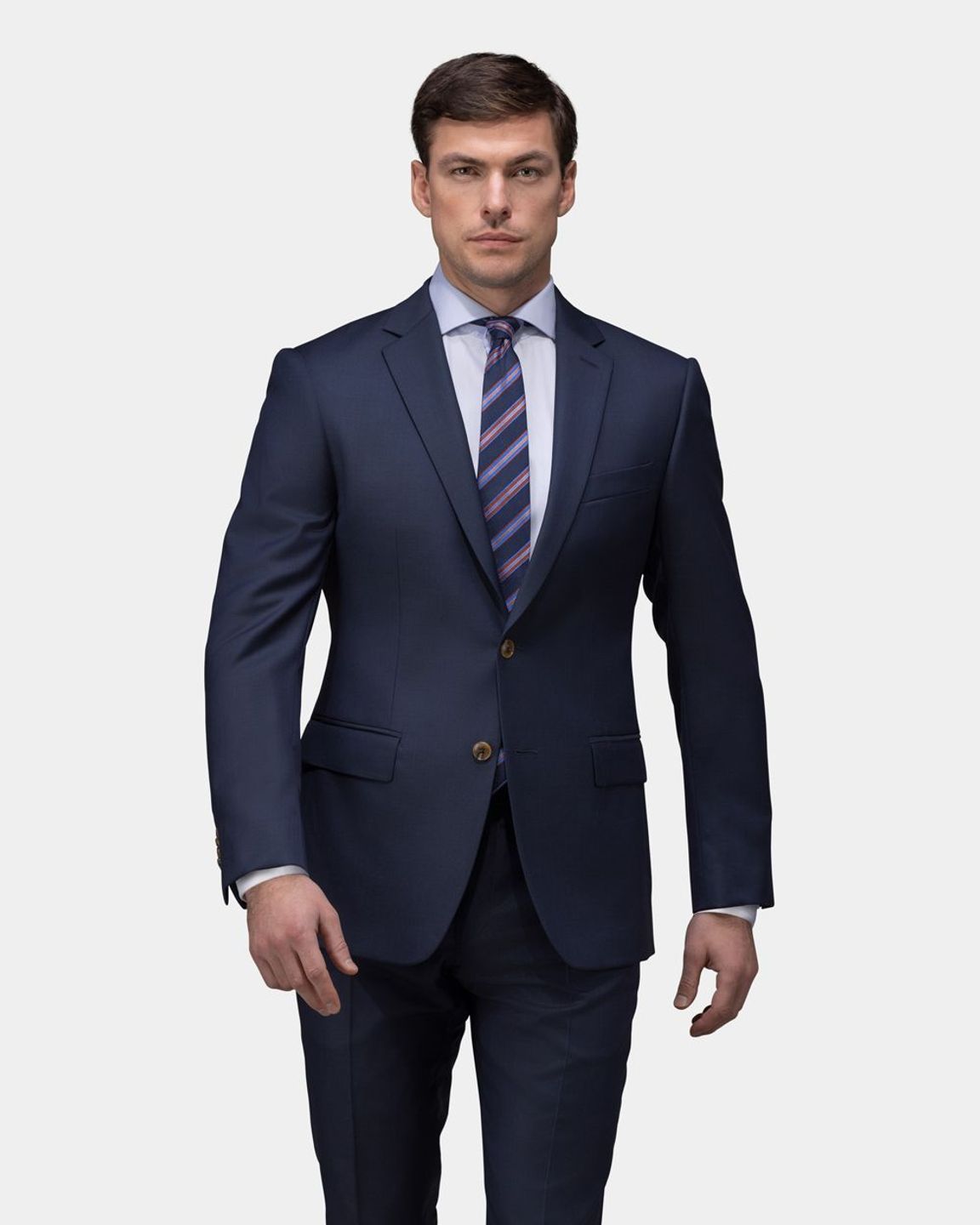Wedding Suits Perth: Tailored Perfection for Your Wedding Day
Wedding Suits Perth: Tailored Perfection for Your Wedding Day
Blog Article
Comprehending the Tailoring Refine: From Material Option to Last Fitting for the Perfect Wardrobe
The tailoring procedure is a complex interaction of art and scientific research, starting with the vital choice of material selection and finishing in the accurate modifications of last fittings. Each fabric type brings one-of-a-kind top qualities that influence not only the visual appeal however additionally the garment's durability and viability for numerous celebrations. Comprehending the subtleties of customizing strategies can raise one's closet to extraordinary degrees of refinement. As we check out these elements better, one must consider exactly how also the tiniest details can significantly influence the overall end result of one's personal design.
Relevance of Fabric Choice
Picking the ideal fabric is critical in the tailoring process, as it directly affects the comfort, sturdiness, and total aesthetic of the final garment. The choice of fabric establishes the foundation for the garment's efficiency, functionality, and style. Different textiles have unique properties, such as breathability, stretch, and weight, which can considerably impact exactly how the garment drapes and fits the body.

A tailored item made from a suitable textile not only showcases workmanship yet likewise raises the user's confidence. Understanding the subtleties of fabric option is vital for any tailoring undertaking. It guarantees that the final item not only meets the aesthetic desires of the client but additionally straightens with practical requirements, thereby accomplishing an unified balance between type and function in the tailored wardrobe.
Kinds Of Fabrics and Their Uses
Understanding the different kinds of fabrics available is crucial for making informed decisions throughout the tailoring procedure. Each fabric possesses one-of-a-kind qualities that dictate its suitability for certain garments and celebrations.
Its flexibility allows it to be tailored into everything from t shirts to gowns. Its natural flexibility aids garments keep shape over time.
Silk exhibits deluxe and is lightweight, making it best for eveningwear and delicate shirts; however, it needs cautious handling because of its fragility. Linen, with its textured coating, is a preferred selection for cozy environments, providing a crisp and airy feel, however it wrinkles quickly, which might influence the garment's look.
Artificial fabrics, such as polyester and nylon, deal toughness and resistance to creases, making them suitable for daily wear and energetic apparel. Understanding these fabric types and their residential or commercial properties permits better decision-making, guaranteeing that each customized item not just fits well however likewise aligns with the intended function and celebration.
The Tailoring Methods Described
The art of customizing depends on a range of methods that change material right into well-fitted garments. Central to this process is pattern composing, where a tailor develops themes based upon the client's measurements and preferred style. This first step ensures important link that the garment will certainly fit the wearer appropriately prior to any reducing happens.
Once patterns are developed, reducing methods come into play. Accuracy is extremely important as mistakes can result in misfitting garments. Tailors often make use of numerous reducing techniques, such as single-layer reducing for intricate styles and multiple-layer reducing for efficiency on common patterns.
Basting is one more necessary strategy, enabling dressmakers to temporarily sew textile pieces together for a preliminary installation (wedding suits perth). This approach supplies the possibility to analyze the drape and total shape prior to final sewing
Seaming strategies, including flat-felled joints and French joints, improve the garment's longevity and aesthetic charm. Tailors likewise use strategies such as interfacing and cushioning to provide structure and shape to certain locations, like collars and shoulders.
Lastly, completing strategies, consisting of hemming and edge completing, make certain the garment's longevity while giving a sleek appearance. Together, these techniques develop the backbone of efficient tailoring, causing splendid, custom-fit clothing.

Fitting Modifications and Considerations
After the first customizing techniques have actually been used and the garment is constructed, suitable adjustments come to be critical to attaining the ideal fit. These adjustments resolve numerous elements of the garment, guaranteeing it contours to the user's physique and enhances general look.

The surge of trousers is an additional vital factor; it must sit pleasantly above the hips without triggering pain, enabling simplicity of activity. Hemming lengths for both pants and skirts need to show the user's favored design while valuing percentages.
Furthermore, focus should be provided to the back of the garment, guaranteeing that there are no unattractive pulls or excess fabric - tailored suits perth. Each adjustment needs to be carefully considered, as even small changes can substantially impact the total fit and aesthetic of the customized item, eventually bring about a wardrobe that shows confidence and elegance
Preserving Your Tailored Clothes
Constantly adhere to the treatment tag instructions, which might recommend completely dry cleaning for directory delicate fabrics or machine washing for more long lasting materials. Avoid constant laundering, as this can wear down the fabric and alter the garment's form.
Storage space is similarly vital; use padded wall mounts for coats and coats to preserve shoulder structure, and store trousers folded neatly or hung to avoid creasing. Secure garments from straight sunshine, which can discolor shades and damages fibers.
In addition, periodic examinations for small repair services can avoid larger concerns. Examine for loosened buttons, tearing joints, or indications of moth damages, attending to these problems quickly to maintain the garment's stability.
Lastly, take into consideration seasonal rotation. Putting on tailored items in moderation permits textiles to recover, extending their lifespan. By applying these maintenance methods, you can make sure that your tailored garments remain as beautiful as the day you first wore them, improving your optimal wardrobe for years ahead.
Conclusion
The customizing process, incorporating textile selection, skilled techniques, and precise fitting modifications, plays an important function in developing garments that boost both comfort and style. Comprehending the relevance of upkeep expands the life of customized garments, solidifying their value in a well-curated closet.
Report this page